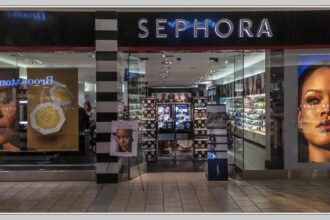How Zara, Louis Vuitton, Rent the Runway & others made their models thrive
Introduction
What do Zara, Louis Vuitton, and Rent the Runway have in common? They’re all profitable—but they couldn’t be more different.
The key? Each of these brands has carved out a business model that maximizes its strengths and serves its target audience. In this post, we’ll unpack the five most profitable models in fashion today and explore why they work.
Model 1: Fast Fashion – Speed and Volume
Fast fashion is built on speed to market and low costs. Brands like Zara, H&M, and Shein dominate by copying runway styles quickly and delivering affordable alternatives.

Shein’s fast fashion dominance comes from tech-driven operations.
Core Features:
- Short design-to-shelf time (2–3 weeks)
- Mass production in low-cost countries
- High volume, low margin strategy
Why It Works: Speed sells. Zara’s ability to respond to consumer demand in real-time helps it sell 85% of its inventory at full price, compared to the industry average of 60%.
Case Study: Shein
With no physical stores and an algorithm-driven design process, Shein became one of the fastest-growing retailers globally. In 2022 alone, it shipped to over 150 countries and reached an estimated $22.7 billion in revenue.
“Shein is not a fashion company. It’s a data company that sells clothes.” — Deborah Weinswig, Coresight Research
Model 2: Luxury Heritage – Craftsmanship and Exclusivity
Luxury brands like Hermès, Chanel, and Louis Vuitton focus on timeless appeal, limited availability, and brand heritage.

Luxury storefronts build atmosphere and scarcity.
Core Features:
- High product margins (up to 90%)
- Controlled supply and pricing
- Deep investment in craftsmanship and exclusivity
Why It Works: Luxury consumers pay for status and quality. Scarcity increases demand and brand mystique.
Case Study: Hermès
The Birkin bag is notoriously hard to acquire. This creates a resale market where bags appreciate in value—enhancing Hermès’ brand equity and profitability.

Model 3: Subscription & Rental – Accessibility and Innovation
Services like Rent the Runway and Stitch Fix offer fashion without ownership. Users pay a subscription or rental fee for flexible access.
RTR brings variety and sustainability to everyday wardrobes.
Core Features:
- Recurring revenue
- Data-driven personalization
- High customer lifetime value (LTV)
Why It Works: Users enjoy wardrobe variety and brands get consistent income. Data improves personalization and retention.
Case Study: Rent the Runway
RTR evolved from special occasion rentals to everyday fashion subscriptions. Its success comes from partnerships with designers and eco-conscious shoppers who love rotating new styles.
Model 4: Direct-to-Consumer (DTC) – Control and Connection
![]()
DTC brands like Everlane, SKIMS, and Warby Parker sell directly to consumers, cutting out retailers and controlling the full brand experience.
Core Features:
- Higher profit margins
- Direct access to customer data
- Transparency, customization, and loyalty incentives
Why It Works: Consumers want brands they can trust. DTC brands use honest messaging and offer better value while owning customer relationships.

Case Study: Everlane
Known for its “radical transparency,” Everlane discloses production costs and factory information—winning over modern conscious consumers.
Model 5: Purpose-Driven Fashion – Conscious Capitalism
Brands like Patagonia, TOMS, and PANGAIA prioritize sustainability, social good, and ethical sourcing.

Patagonia’s roots are in environmental activism.
Core Features:
- Strong customer loyalty
- Premium pricing backed by values
- Advocacy built into brand voice
Why It Works: Gen Z and millennials favor brands that share their values. Purpose-led brands earn repeat customers, press, and social engagement.
Case Study: Patagonia
Patagonia’s bold move to donate the company to fight climate change made global headlines—and deepened its credibility with loyal customers.
Hybrid Models: Best of All Worlds
Some brands blend these strategies:
- Nike: Sells wholesale, DTC, and through proprietary apps
- Lululemon: Mixes retail, community events, and online experiences
- SKIMS: Combines DTC, celebrity endorsements, and limited drops
What Makes a Model Profitable?
It’s not just about revenue. It’s about:
- Gross margin
- Customer acquisition cost (CAC)
- Scalability
- Loyalty
| Model | Avg Margin | CAC | Scalability | Loyalty |
| Fast Fashion | Medium | Low | High | Low-Med |
| Luxury | High | High | Medium | High |
| Subscription | Medium | High | High | High |
| DTC | High | Medium | Medium | High |
| Purpose-Driven | Medium | Medium | Medium | High |
“A good business model is a story that explains how a company works.” – Michael Lewis, The Big Short
Conclusion
In the fast-moving world of fashion, alignment between product, customer, and business model is everything. Whether you’re building a global luxury empire, scaling a fast fashion app, or launching an ethical label, the right model creates momentum, loyalty, and profit.
Want more insights like this? Subscribe to our newsletter and follow us for brand strategy deep dives.











